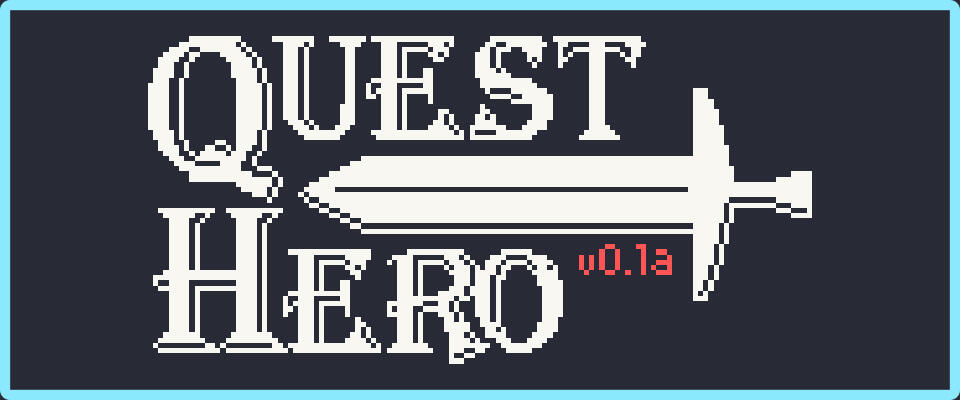
OVERVIEW
Genre: Puzzle
Engine: Godot 4.1
Duration: 2 Months
Team Size: 1
Role: Solo Developer
ABOUT
Quest Hero v0.1a is a short puzzle experience where players must fix a broken and unfinished game by rearranging pieces of the game's code.Each level is a self-contained puzzle designed to highlight and teach the player a unique mechanic or interaction in the game.The game was originally made for Mini Jame Gam 16, with the theme of Break the Rules, and the special object Duct Tape.
Key Skills
Project Management
Systems Design
UX Design
Level Design
Playtesting
CONCEPT
The game, originally titled Spaghetti Code, interpreted theme of Break the Rules literally, with the initial concept revolving around rearranging rule statements in the game, inspired by Baba is You.The pseudo-code interface was inspired by the comedic and relatable concept of "holding your code together with duct tape." The goal was to make a game that emulated the frantic experience of trying to fix problems as they arise, only for those solutions to end up causing more problems.The game was conceptualized as a Strategy RPG/Roguelike where players had to rearrange code from themselves and their enemy to survive each encounter, by utilizing a limited duct-tape resource that gradually decayed over time. This game had 3 gameplay goals:
Fast paced, reaction based problem solving.
Strategic resource management
Outside the box thinking and solutions
Concerns with balance arose with the idea that a dominant strategy would be to simply give oneself the biggest damage numbers, so additional resources were conceptualized such as RAM, which limited how many "strong" components the player could use.Ironically, this process of solving problems caused by earlier solutions plagued the project across the duration of the game jam, resulting in it being unfinished by the jam's deadline. Ultimately, feature bloat and lack of focus lead to the game being put on hold for several months, before being revisited with a fresh lens.Returning the the game's inspiration, and with the goal of creating a more guided experience with a reasonable scope, it was realized that the third gameplay goal held the strongest potential. Thus, the game was restructured as a puzzle game, which emphasized outside the box thinking. To reinforce this, new gameplay goals were created:
Outside the box thinking and solutions
Thinking like a programmer
Whenever possible, code should run
BREAKING THE RULES
One of the game's main mechanical twists is the ability to use numbers to reference other components as "pointers." This feature was based on the use of memory addresses in low-level programming languages like C, and their real-world function in computing.There is a niche of players, specifically in the speedrunning community, who discover and develop highly complicated exploits in games which manipulate pointers in order to perform arbitrary code execution (ACE) and force the game to do whatever tasks they desire.My goal was to recreate the enjoyment and fascination with discovering these exploits, and allow players to do similar actions in the game. As a part of this, I wanted the feature to be always present, and if possible, never explicitly pointed out. This would recreate that feeling of discovering, and the joy that the player has suddenly gotten away with something.
SATISFACTION & VISCERALITY
From it's earliest versions, emphasis was put on making interacting with the game by moving components as fun as possible. The UI was designed to feel sleek and modern, evoking the interface of an actual game engine to feel realistic, while also being slightly whimsical and toy-like to make it feel approachable.To achieve this, the layout was taken from the Godot editor itself, with the "game" in a large central panel, surrounded by various interfaces for data. The colour scheme was taken from the Dracula theme, a popular dark theme for various IDEs. Interactable buttons were based off of the Material Design style, but were given 3-dimensional depth to create tangibility and weight.

Clicking the buttons was designed to emulate the viral satisfaction of mechanical keyboards, as well as the feeling of clicking a pen and watching it bounce off a desk. To achieve this, emphasis was put on sound design, and animation.In the final version, players can drag and drop components between one another. Despite this, some players still manually release each component and before dragging them into place, citing their enjoyment in doing so.